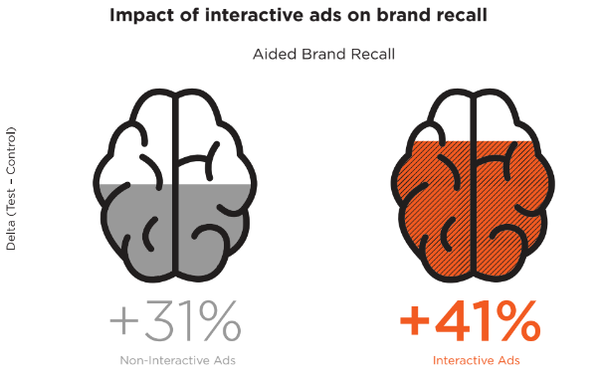
Interpublic’s Magna and IPG
Media Lab units today will publish findings of a scientific market trial indicating that interactive video ads shown on tablets, desktop and mobile devices generate attention levels comparable with
television ads.
The report, entitled “The Interactive Effect: A Key to Surviving in the Attention Economy of a Mobile-First World,” finds that interactive video ads
extend the amount of time that consumers pay attention to a brand by 47% over non-interactive video ads.
The study, which was conducted with Tremor Video DSP, was based on a panel of
2,157 online users who downloaded a custom app to view video content at their own discretion.
Prior to viewing the content, the participants were served a pre-roll ad, just as they
would “in the wild.”
advertisement
advertisement
It was not clear from the data provided by the Interpublic units what role, if any, wear-out might play in engagement and attentiveness levels -- but
the study concluded that interactive video units make ads “32% more memorable than non-interactive ads,” regardless of whether consumers actually interact with them or not.
“Such attention metrics are normally reserved for the viewing of television advertisements and contradict the prevailing conventional wisdom that shorter is better for capturing
consumers’ attention,” opined Ariane Gut, vice president-head of insights and analytics at Tremor Video DSP, adding: “Brands that have tested mobile interactive video ads for
themselves have experienced an uptick in engagement, demonstrating that there’s more value that can be had from existing assets when layered with elements designed to give consumers more of an
immersive experience.”
Brands participating in the trial included Amazon, Arby’s, FCA, and MillerCoors. Details on the creative and interactive execution were not
provided at presstime.